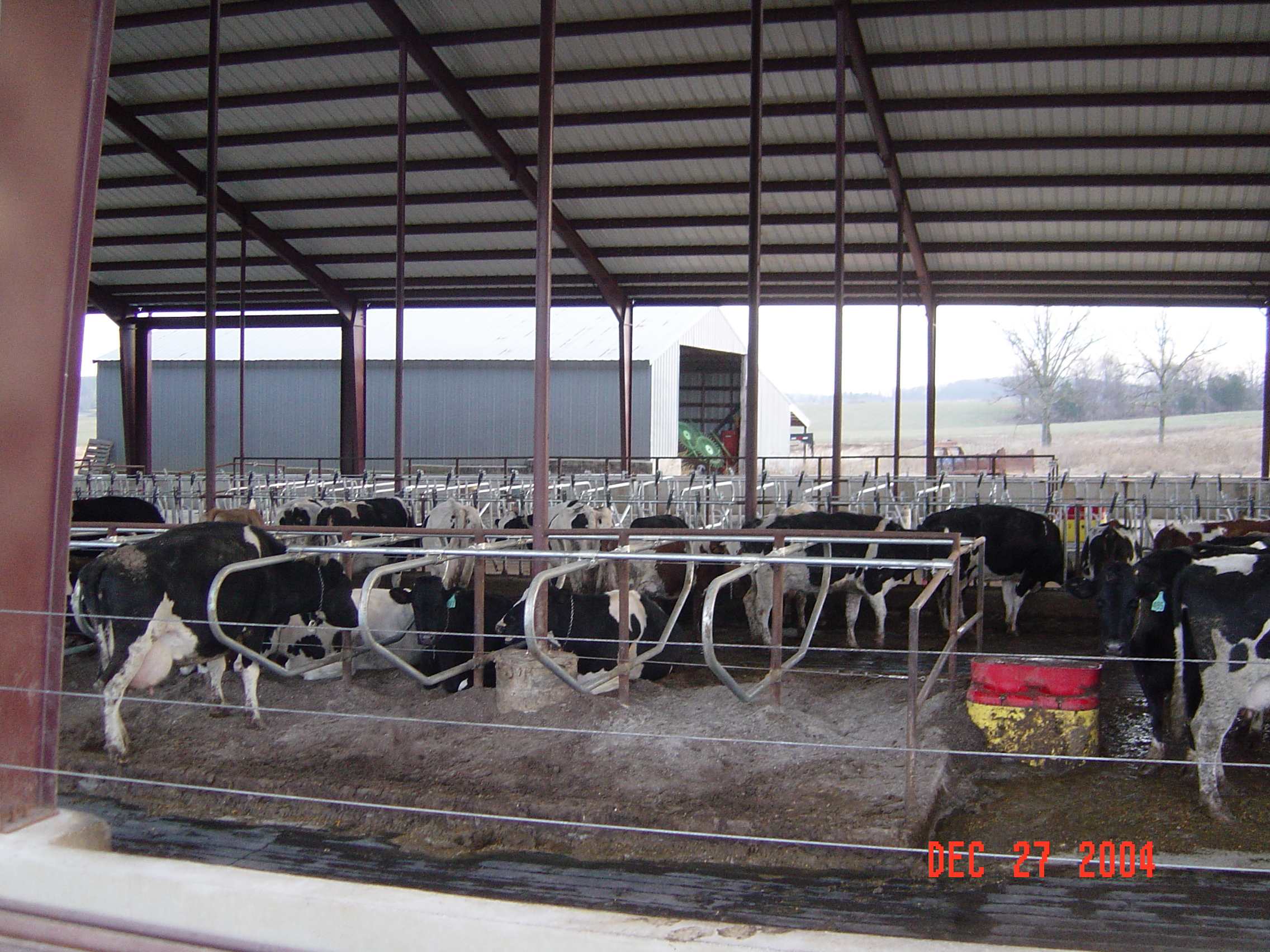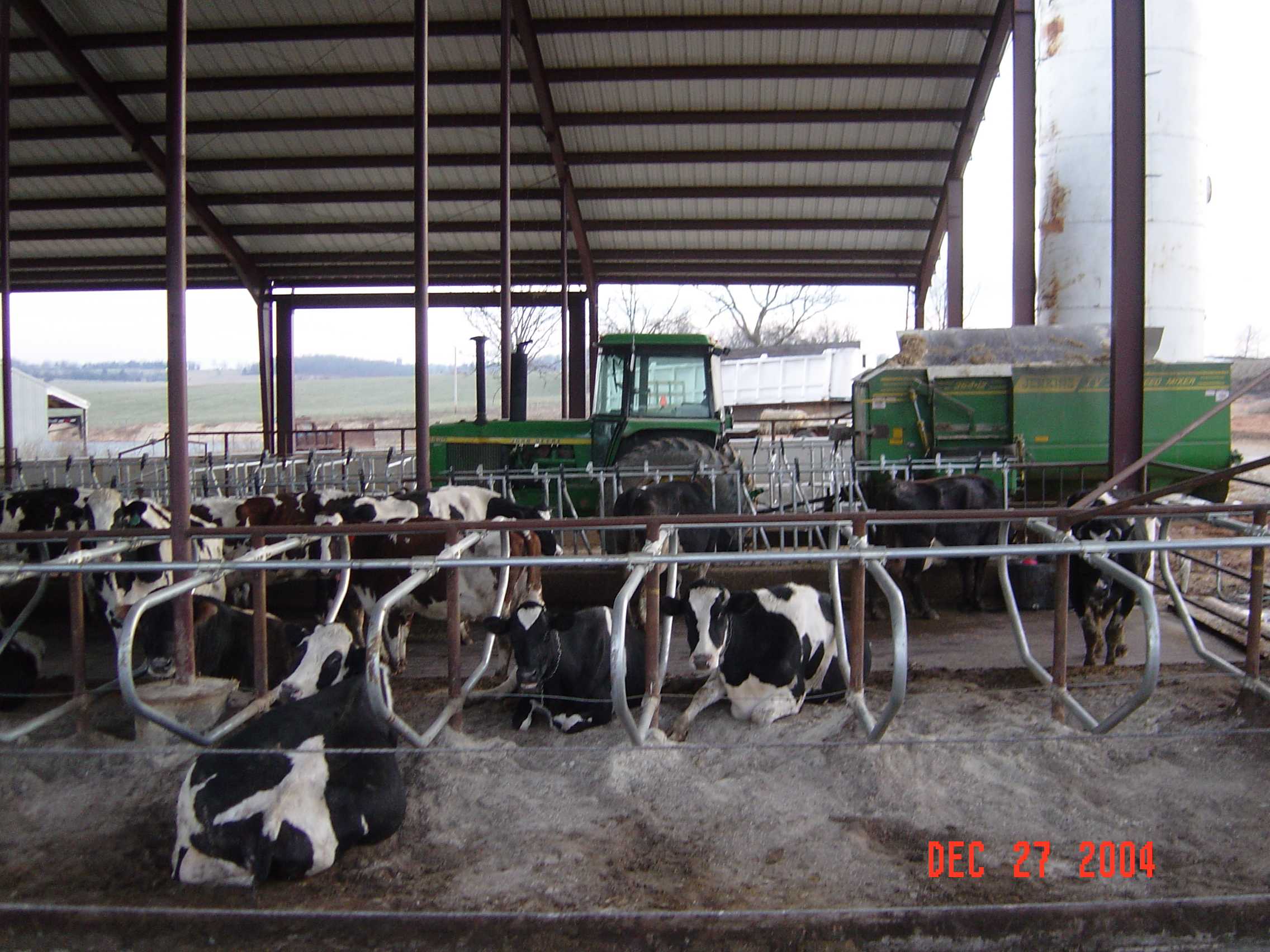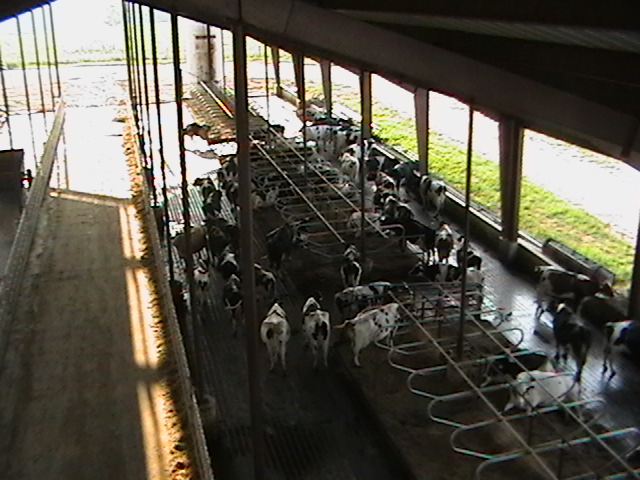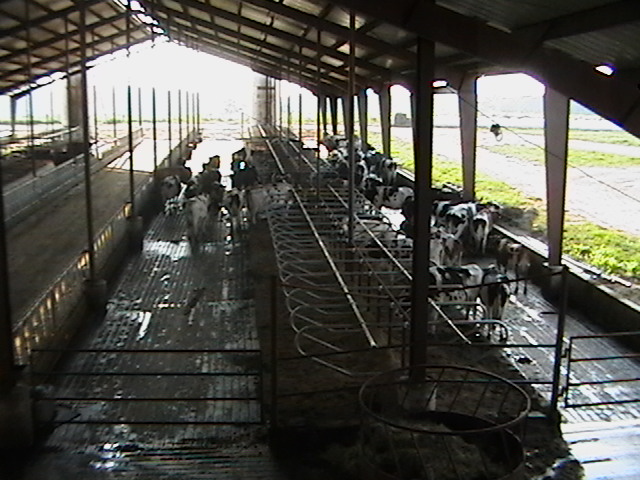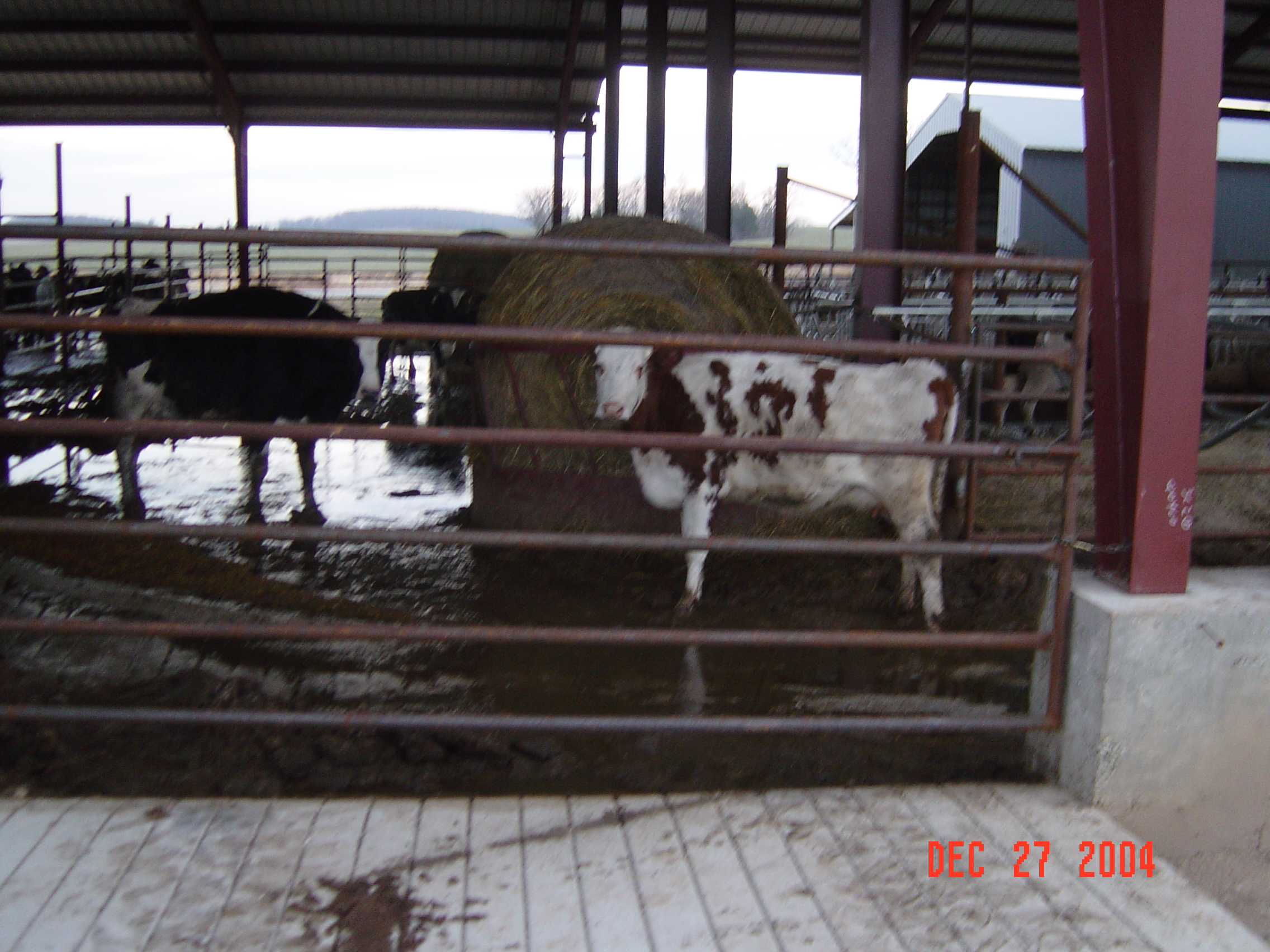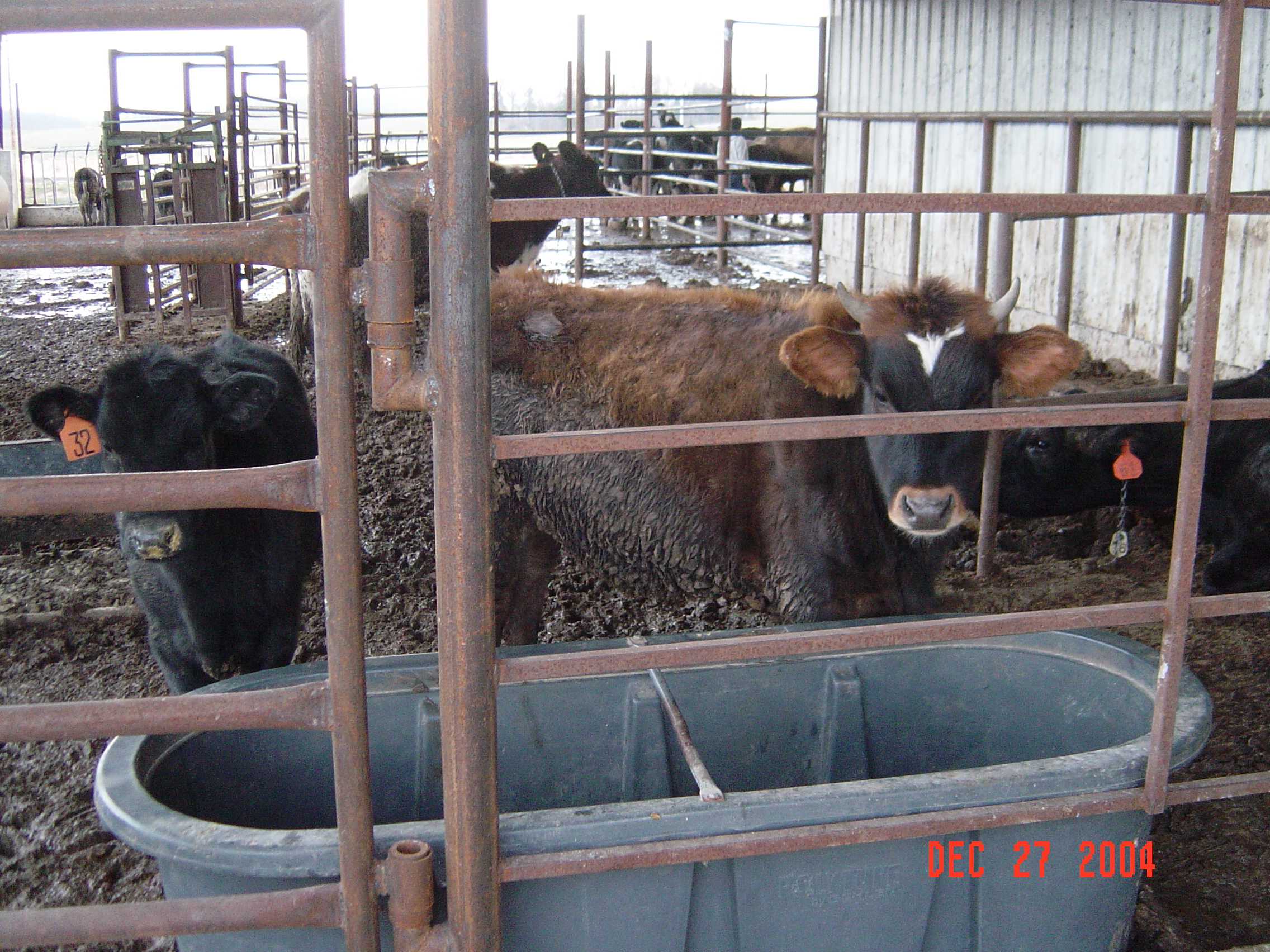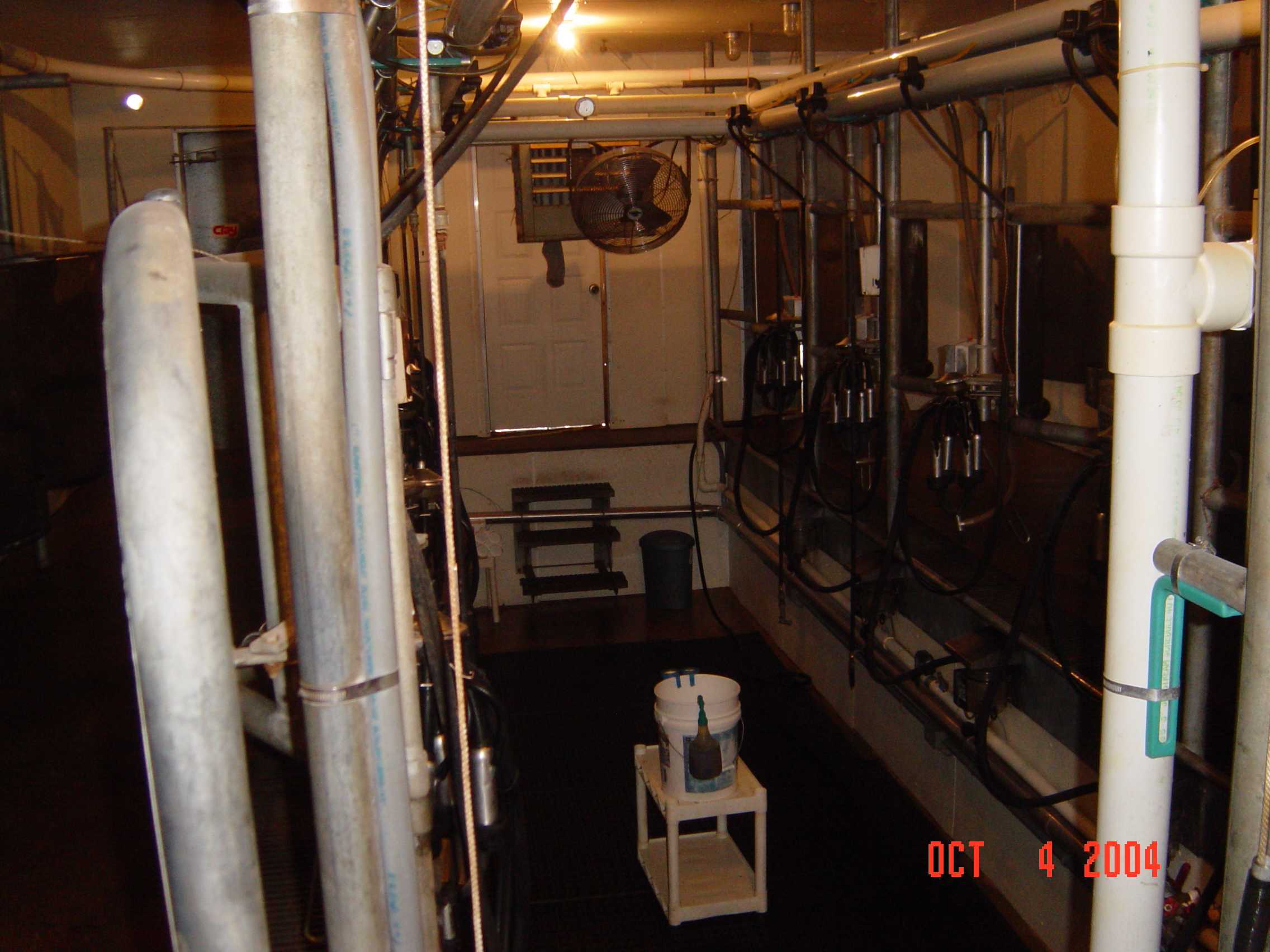The Advantages To Housing Milk Cows in a Freestall Barn are:
1. Increased Milk Production. Energy produces milk. A cow that is confined to a smaller
area will not be up and walking around burning a lot of energy. The energy the
cow saves by lying down or walking a small amount can and will be used to make more milk.
A cow confined to a freestall barn will produce 7 to 10 pounds more of milk per day.
2. The cows diet can be controlled completely.
If a cow is left to graze, one does not have the ability to control the amount of grass the cow eats or to know the
amount the cow has eaten. By housing the cow in a freestall barn you can get more protein, vitamins, etc., into her diet. Once feed becomes wet the cows will not eat it. Therefore, you are wasting feed and
the cow is eating less. With a freestall barn, the feed stays dry and fresh because it is out of the sun and rain. Less food
is wasted which means lower costs.
3. The cows stay cleaner. By lying in a stall of her choice, which has clean, soft,
and dry oak shavings, the cow will stay clean and decrease infections to the mammary system. Decreasing infections of the
mammary system in turn decreases the need for antibiotics. Milk from cows being treated with antibiotics cannot be sold and
creates a financial loss. The clean stalls decrease this problem.
a. Also,
the stalls reduce the amount of sub-clinical mastitis (an infection of the mammary system), which reduces the somatic cell
count (the number of dead white blood cells in the cows milk). A healthy cow will have a low cell count of 250,000 or less
and a cow with sub-clinical mastitis will have a high cell count 350,000 or more. Milk with a low somatic cell count will
stay fresh longer because it is a higher quality of milk. Therefore, the milk company will pay a premium for low cell count
milk.
b. This
has saved about $400 to $600 per month on the vet bill; we have not had any treated milk, which could not be sold; and, we
have received a $0.50 per 100 pound of milk premium from the milk company.
4. The cows stay comfortable. By being under the barn roof in the summer, the cows can
be easily sprayed with water and we use the ceiling fans to keep them cool. This also increases milk production. In winter
the cows are kept out of the cold rain, snow and ice. Ice is especially detrimental to the cows, they are likely to slip and
fall and break a leg. This then leads to vet bills and sometimes death. By housing the cows in the barn all year, they are
kept more comfortable and do not have to suffer in the elements.
5. Eliminating Hoof Problems. By keeping the cows in the barn we have eliminated problems
with the cows’ hoofs. Small rocks are prone to lodge in the hoof of a cow. When this happens, it causes an abscess in
the cow’s hoof and it becomes painfully sore. It takes approximately 5 to 6 months for this to heal. During this time,
the cow will consume less feed and her milk production will decrease by about 50%. And her body condition will decrease because
of the loss of appetite and the weight loss.
6. Reduction in labor costs. Having the
cows housed in the barn saves labor. The cows are housed beside the milking barn and are up and ready to go at milking time.
If they are left in the pasture, they have to be chased over 50 acres or so to get them to the milk barn
7. Better maintenance of the cows. By having the cows in the barn it is easier to detect
any problems that they may be having. We see them everyday, all day long. If they are scattered over 50 acres it is more difficult
to watch them as closely. We have been able to treat sick cows faster and easier because they are confined in one area where
they can be monitored.
8. Easier Access to Clean Water. The cows have all the clean, fresh, cold water they
can drink in the barn; they don’t have to go more than 50 feet in any direction to get water. This encourages water
intake and since milk is 87% water, more water means more milk production.
9. Easier Herd Check. Each month the vet comes to the farm and conducts a health check.
This includes pregnancy check, dry off, seven month bred cows, put on neck chains with numbers, and any other health concerns
that need to be addressed. There are headlocks (cows reach through to eat and
the cow’s head is locked in place so she cannot back up) in the barn so as they are eating we can do what needs to be
done without interrupting the cow’s schedule/routine. This is better for the cows and it is easier for us.
10. Reduces Problems During Bad Weather. By housing the cows in the barn, I am not out in the bad weather rushing
the animals inside and perhaps causing an accident (e.g.: fall) to one or more of the herd. It also reduces any stress placed
on the cows, because they are not out in the elements and are not being forced to run or hurry inside.
11. Handling of Cow Manure. The cow manure is flushed into a lagoon by way of a piping system. Being able to collect
all of their manure is an advantage. It is then used for fertilizer on the cornfields. This is approximately a $1,200.00 per
year savings on the fertilizer bill.
12. Truly Environmental. This design is a self-contained system that
recycles the water and the waste for multiple usages, conserves water, keeps the waste from the aquifer and keeps the environment
clean.
13. More Land to Plant. With the cows being housed in the barn, we can now use the 50 acres they used to graze on
to plant more corn and produce more silage to feed them.
